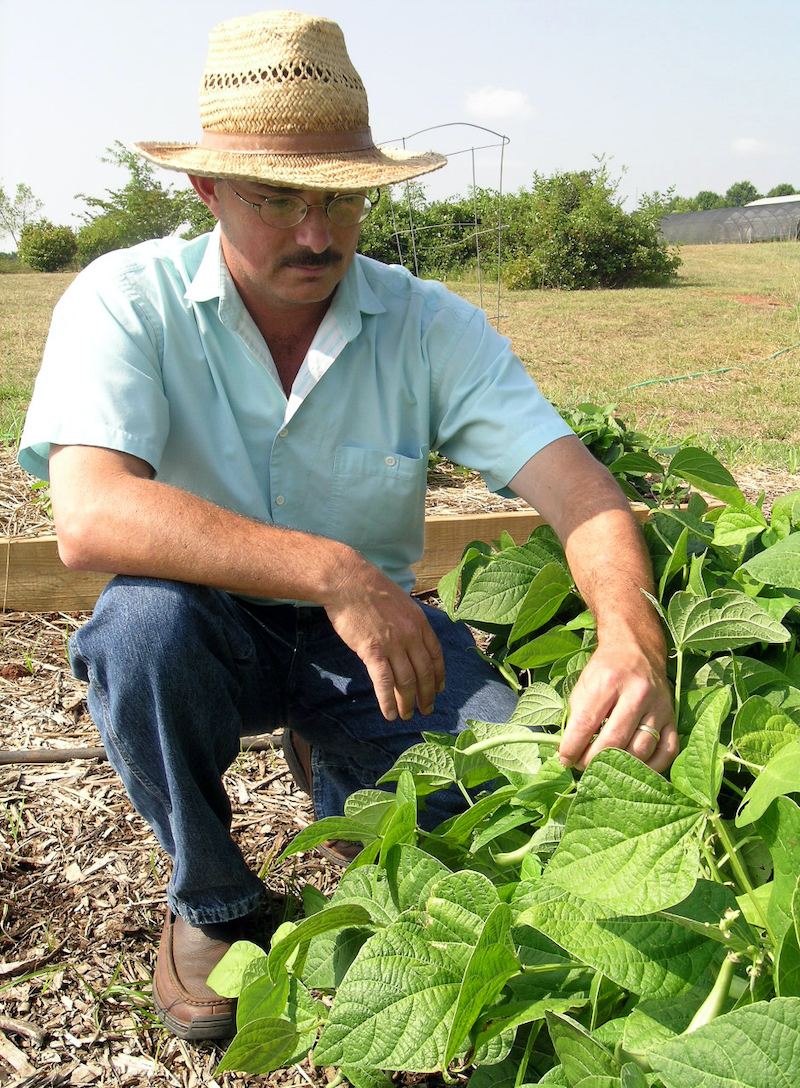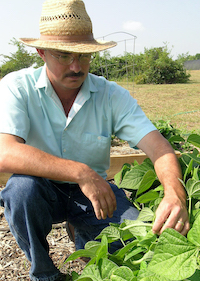To call this past spring in Georgia normal would be a mischaracterization. Typical springs in Georgia seem to last about three days — and then we hit the hot weather. This spring, the cooler temperatures were most pleasant and hung on through the middle of May. Rainfall has also been feast or famine, and wind patterns have been higher than normal. Together, these conditions have made for a challenging time in the vegetable garden.
As one of the University of Georgia’s state vegetable specialists, I have seen many issues this spring, both in home gardens and in commercial grower operations. Cooler-than-normal soil temperatures either delayed planting or caused some seed to rot before it germinated. Other vegetables, such as early-planted okra or beans, may have come up but many are stunted. Many of the new hybrid sweet corns prefer soil temperatures in the mid to upper 60s, and Georgia has only just reached that threshold (in degrees Fahrenheit) in the past few weeks. Other symptoms caused by cool temperatures can include nutritional deficiencies in vegetable plants — including phosphorus deficiency, which often occurs when soil temperatures stay below 60 degrees. A sign of phosphorus deficiency in vegetables is leaves turning a purplish color.
The good news for most of these issues is that the plants normally outgrow them. Now that we are warming up, stunted plants will begin to take off and are also better able to use available nutrition.
To get your garden up and rocking and rolling again, there are a few things that you need to do. Rainfall can be unpredictable, so be prepared to provide supplemental irrigation. In the absence of rainfall, provide approximately 2 inches of irrigation per week. Raised beds may require more water as they drain much faster. Vegetable plants will also need sufficient nutrients to thrive. Adjust your soil pH to between 6.0 to 6.8. To determine the pH of your soil, take a soil sample to your local UGA Cooperative Extension office.
Testing your soil will also provide details on what kind of fertilization your garden needs. In general, vegetables will need approximately 20 to 30 pounds of a balanced fertilizer per 1,000 square feet at planting. Additional fertilizer should be added after vegetables begin to develop small fruits. Take care not to place the fertilizer on top of the vegetable leaves or too close to the stem of the plant, as this can burn the plant.
About the time vegetables begin to grow well, weeds also begin to show their ugly heads. Preventing weeds from germinating is the best course of action for keeping them under control. Pre-emergent herbicides, as well as organic mulch and synthetic weed barrier, are good options to help prevent weeds. Once weeds germinate, you will need to control them with post-emergent herbicide options as well as mechanical removal with a tiller, hoe or hand pulling.
While warmer temperatures can certainly aid the garden, they also increase the level of disease and insect activity on your vegetables. Scout through your garden frequently for signs of insect problems to catch them early. Only a handful of insect species are problematic in the home garden. Learn how to identify the good guys from the bad guys so that you don’t spray beneficial insects. Disease issues can often be kept minimal through sound management practices. When necessary, select the proper disease control for either the fungal or the bacterial issue at hand.
With luck, and depending on what you have planted, you should be able to begin harvesting in a month or two. Harvest most vegetables when they are young, as they are most tender and tasty at that stage. This will also trick the plant into continuing to bear fruit. Store harvested vegetables inside the house or refrigerator to increase their shelf life. Your fresh harvest should produce many delicious meals throughout the growing season.
For more information on home fruit and vegetable gardening, visit extension.uga.edu or contact your local Extension office.








